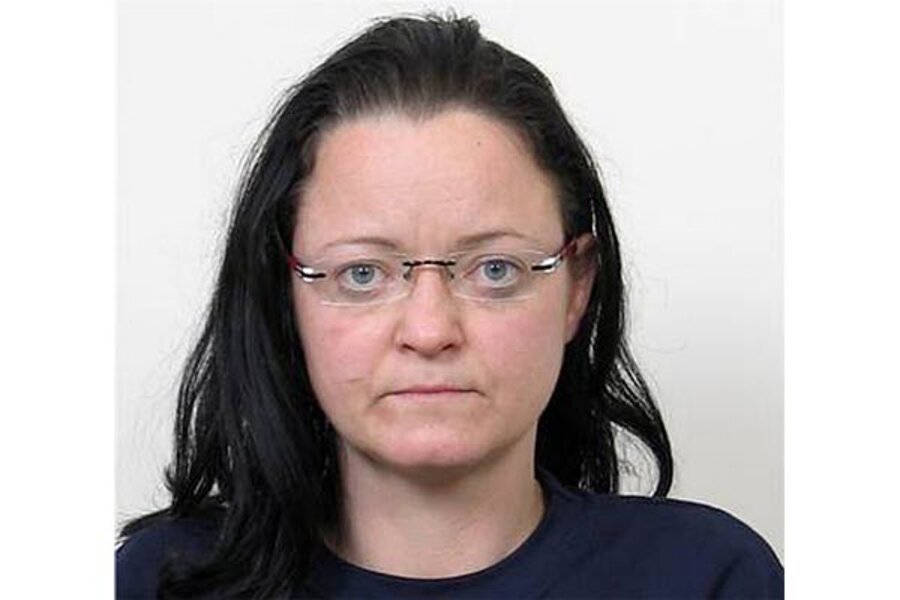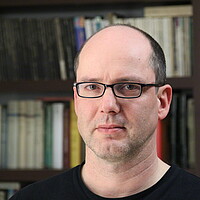Germans see troubling questions in high-profile neo-Nazi murder trial
Loading...
| Berlin
Her picture is on the front page of every single newspaper in Germany today.
Beate Zschäpe, the 38-year-old who is accused of having been a member of the National Socialist Underground (NSU), a neo-Nazi terror cell that murdered, bombed, and robbed banks across Germany, appeared in a Munich court for the first time yesterday amid huge media interest. Her trial, seen as Germany’s biggest since the so-called Stammheim trial against the left-wing Red Army Faction in the 1970s, has raised troubling questions about Germany's police forces.
The significance of the case goes far beyond the individual guilt of one woman.
Even the existence of a murderous underground Neo-Nazi cell that went on a killing spree over many years completely escaped the authorities. By contrast, the crimes of the left-wing Baader-Meinhof gang, as the Red Army Faction was known early on, targeting representatives of the state and high-profile public figures, triggered an unprecedented police response.
“I’ve been asked many times if this terror group has destroyed my trust in German democracy,” says Mehmet Daimagüler, a lawyer representing the families of NSU victims. “It has not – no terror group will ever manage to do that. However, parts of the secret service have indeed destroyed my trust in the German state.”
Immigrant targets
Nine of the 10 NSU murder victims were small business owners of Turkish or Greek background. They were executed at their workplaces with shots to the head. The crime scenes were scattered all over Germany, but the same weapon was used in all the killings, which occurred between 2000 and 2007. The police quickly came to the conclusion that the crimes were part of a turf war between Turkish mafia groups. A special police unit called “Operation Bosphorus” was created, and relatives of the murder victims were interrogated and put under surveillance. The derogatory phrase of “Döner-Morde,” or Kebab Killings, was coined.
“The obvious failure of our security forces is based on underestimating the threat of neo-Nazism in Germany, a prejudiced investigation, and miscommunication between different agencies,” says Sebastian Edathy, chairman of the special parliamentary inquiry set up to investigate the role of the authorities in the NSU killings.
Suspects went underground
In the 1990s, the NSU trio of Uwe Mundlos, Uwe Bönhart, and Ms. Zschäpe were well-known figures in the right-wing scene of Jena, a city in eastern Germany. When police tried to arrest them on suspicion of bombmaking in 1998, they went underground and stayed there, undetected, for 13 years.
During this period, it appears, they not only murdered 10 people, they also detonated two bombs in areas populated by migrants, and robbed a dozen banks.
But on Nov. 4, 2011, one such bank robbery went wrong: Bönhard and Mundlos were cornered by police. They retreated into a camper van, set the vehicle on fire, and killed themselves with a shotgun. Four days later, their accomplice, Zschäpe, turned herself in. Before she called the police, she blew up the house the trio had lived in. And she posted copies of a DVD to several news organizations in Germany.
The DVD contained a grisly video: a macabre montage of a clip from the Pink Panther movie interspersed with pictures of the victims, newspaper cuttings of the murders and, seen for the first time, the signature of the "National Socialist Underground." Only then did an incredulous German public learn that not Turkish mafiosibut a right-wing terrorist cell was responsible for the so-called Kebab killings.
How were they missed?
For many observers, the failure of the German state to find the group is deeply troubling. Some point to the federal structure of Germany’s authorities as part of the problem: There are 16 state police forces and 16 state secret service bureaus, all of which have national counterparts. But the lack of communication between them was only one issue. After the NSU’s cover had been blown, police files were shredded, pieces of evidence disappeared, and secret agents refused to turn up for questioning by the parliamentary inquiry.
The secret service in Thuringia, where the NSU members grew up, admitted that neo-Nazi double agents had received large sums from intelligence officials in return for useless information. When Halit Yozgat, the second-to-last victim, was killed behind the counter of his father’s Internet cafe in the town of Kassel in 2006, an undercover agent of the Hesse secret service sat in front of one of the computer screens – but allegedly didn’t notice anything and was there by sheer coincidence.
So was it all a big cover-up?
John Goetz, co-author of “The Cell – Rightwing Terrorism in Germany,” says that “I have spent a year and a half looking into conspiracy theories about an involvement of German authorities into the killings. We had promising leads, but none of them held water.”
But even if German authorities did not collude with the neo-Nazis, the charge of institutional racism and negligence stands, and the trial against Beate Zschäpe might turn up more evidence of that.
“The trial calls up the ghosts of a country that had a genetic defect from its very beginning, in failing to deal properly with its Nazi past,” says Mr. Goetz. “And the fact that you had the security forces actively pursuing every Muslim with a somewhat radical ideology while closing their eyes about local neo-Nazis killing Turks all over the country invokes some of the deepest problems that this country has.”









